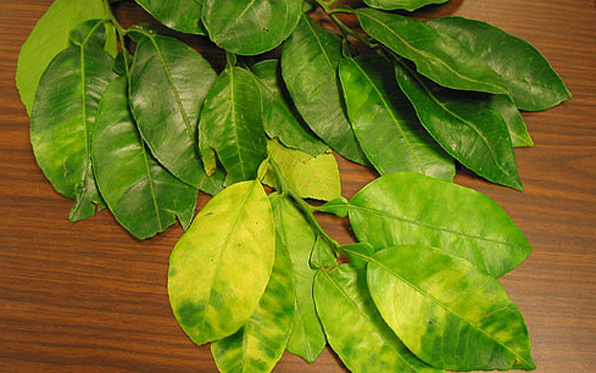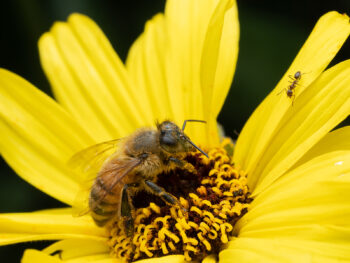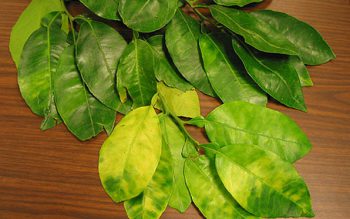San Diego County officials are asking the public to help protect the region from an incurable and potentially devastating citrus disease discovered for the first time in California late last month in Los Angeles County.
San Diego County Agricultural Commissioner Lisa Leondis said local residents can take a number of steps to help ward off, or contain, huanglongbing disease — a bacterial disease also known as “citrus greening” that was only discovered in the U.S. in 2005 — including:
- Not taking or moving cuttings from backyard citrus plants from one property to another.
- Buying citrus trees only from reputable local nurseries.
- Cooperating if County (or state) inspectors ask to place insect traps on their land (traps are to find and test Asian citrus psyllid, the insect that can carry citrus greening bacteria).
- Reporting citrus trees and plants that seem to be sick or dying even though they also appear to be well-watered and well-maintained by calling the California Department of Food and Agriculture hotline at: 1-800-491-1899.
State and federal agriculture officials quarantined a 93-square mile area of Hacienda Heights in Los Angeles April 3 after the disease was detected in a lemon/pummelo tree in a residential area.
Citrus greening is not dangerous to people or animals, but it is considered the one of the most serious citrus plant diseases in the world and could devastate San Diego County’s $78 million citrus industry. A University of Florida study estimated that citrus greening has cost Florida $3.6 billion in economic activity and 6,600 jobs since it was first found there in 2005. The disease has since spread to Texas, Louisiana, Georgia, South Carolina and now, California.
Citrus plants affected by citrus greening can have blotchy mottled leaves, yellowed leaves on a single shoot or branch, and/or small, narrow leaves and short stems. Fruit from trees with the disease are often small, misshapen and taste bitter, medicinal or sour.
The disease is primarily spread by Asian citrus psyllids, which are very small, only 3 to 4 millimeters long. The insects spread the disease by feeding on infected plants and then healthy plants. However, citrus greening can also be spread by grafting a stem or tissue from an infected plant onto a healthy plant. Grafting is popular among backyard gardeners and nurseries and can create single plants and trees that can produce different kinds of fruit.
Leondis said the Asian citrus psyllid has been detected in San Diego County since 2008, but there have been no detections of citrus greening. She said the County Department of Agriculture, Weights and Measures is being extra diligent in its monitoring for the disease, and has placed roughly five Asian citrus psyllid traps per square mile in the urbanized areas of the county, totaling roughly 1,650.
For more information go to: http://www.cdfa.ca.gov/plant/acp/






